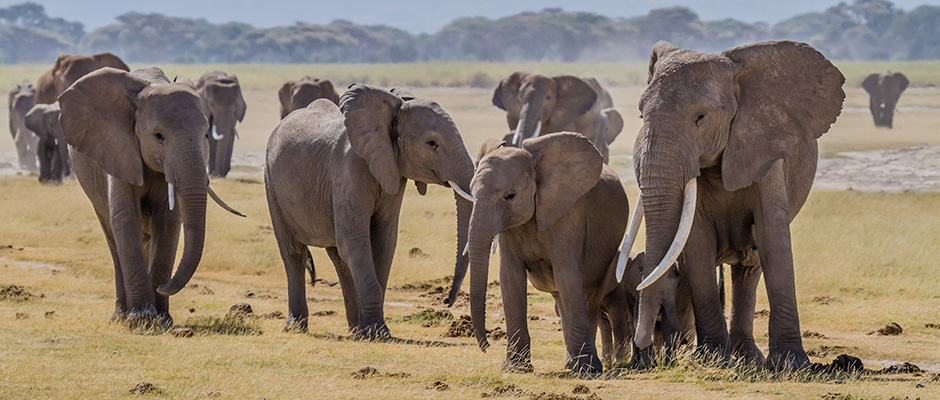Share this article
U.S. Releases Plan to Combat Illegal Wildlife Trade
Wildlife poaching and trade are a serious threat to wildlife conservation. The escalation and severity of this threat has prompted the United States to take action. On February 11, 2015, a presidential task force released an Implementation Plan, which will guide efforts to execute the National Strategy for Combating Wildlife Trafficking.
To undermine illegal wildlife trade on both the domestic and international stage, the Implementation Plan and National Strategy prioritize three objectives: strengthing law enforcement, reducing consumer demand for illegally-traded wildlife and products, and collaborating with other countries, governments, agencies, and organizations. “Wildlife crime has to be treated as a serious crime,” said Craig Hoover, chief of the Wildlife Trade and Conservation Branch of the U.S. Fish and Wildlife Service.
Poaching, the source of various illegal wildlife products, has dire ecological consequences. “Some of these species that are most heavily exploited are being driven to extinction,” said Craig Hoover. Illegal wildlife trade threatens elephants, rhinos, tigers, sharks, sea turtles, great apes, exotic birds and pangolins among others. Species that rely on those animals also are impacted negatively. “The National Strategy and the Implementation Plan heighten the profile of the issue,” said Hoover.
Over the past several years, illegal wildlife trade activity has escalated to what the plan claims is a “wildlife trafficking crisis.” Rhino poaching in South Africa — the rhino’s major range state—has skyrocketed in the last two to three years. The South African Department of Environmental Affairs reported 13 rhinos killed in 2007 compared to the 1,000 poached in 2013 and the 1,200 slaughtered in 2014.
African elephants (Loxodonta africana) also have also suffered a recent explosion in poaching activity. One study found the number of African elephant killings dramatically increased after 2008, peaking in 2011 with an estimated 40,000 murdered that year. For both species, killings are projected to outpace births in the near future, making extinction an imminent possibility.
“We face the very real possibility of losing rhinos, of losing at least some national populations of elephants, of losing lesser known species such as pangolins, simply because of the scale of poaching and the scale of illegal trade,” said Hoover.
In addition to the alarming number of poaching incidents, the infrastructure and organization of poaching operations has changed. Poaching and illegal trade has shifted from small-scale crime to what Hoover calls “highly-organized, professionalized, illegal activity, involving organized networks of criminals and corrupt officials.” Organized crime syndicates, which often use sophisticated weaponry and smoother smuggling operations, are attracted to illegal wildlife trade by the rising demand for and value of wildlife contraband.
And the animals are paying the price. For example, one incident involved an insurgent group using automatic weapons to methodically shoot and kill more than 400 elephants in northern Cameroon’s Bouba Ndjida National Park in 2012.
In light of these and other incidents, the president signed the Executive Order Combatting Wildlife Trafficking, which called for the creation of an interagency task force, in July of 2013. The Departments of Justice, State, and the Interior — which includes FWS — co-chair the task force. Representatives of those departments worked together to create the National Strategy launched in 2012 and the Implementation Plan released last week. The plan guides the execution of the strategy.
One key component of the plan, according to Hoover, is the call for interagency collaboration. “The only way to effectively tackle [wildlife crime] is to have a whole-of-government approach addressing the problem from source to consumer,” he said. The task force comprises 17 federal agencies and offices, bringing new agencies and resources to the table.
“I’m very hopeful that we are moving in a positive direction and will continue to do so,” said Hoover. “We’ve made a number of significant strides, but there is plenty of more work to be done.”
Header Image: Image Credit: Behn Lieu Song








